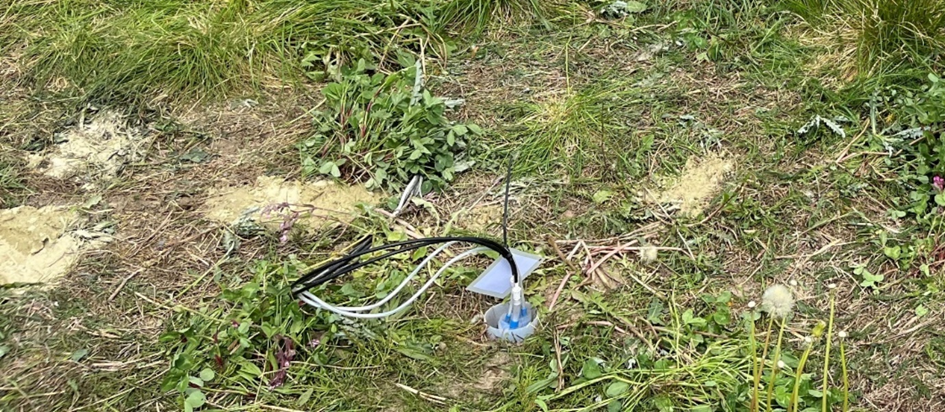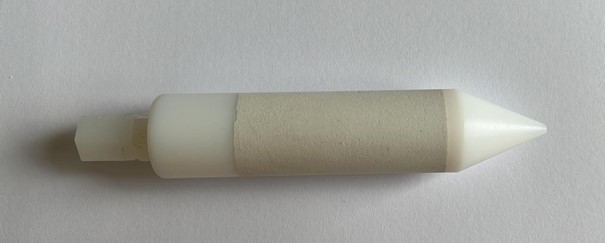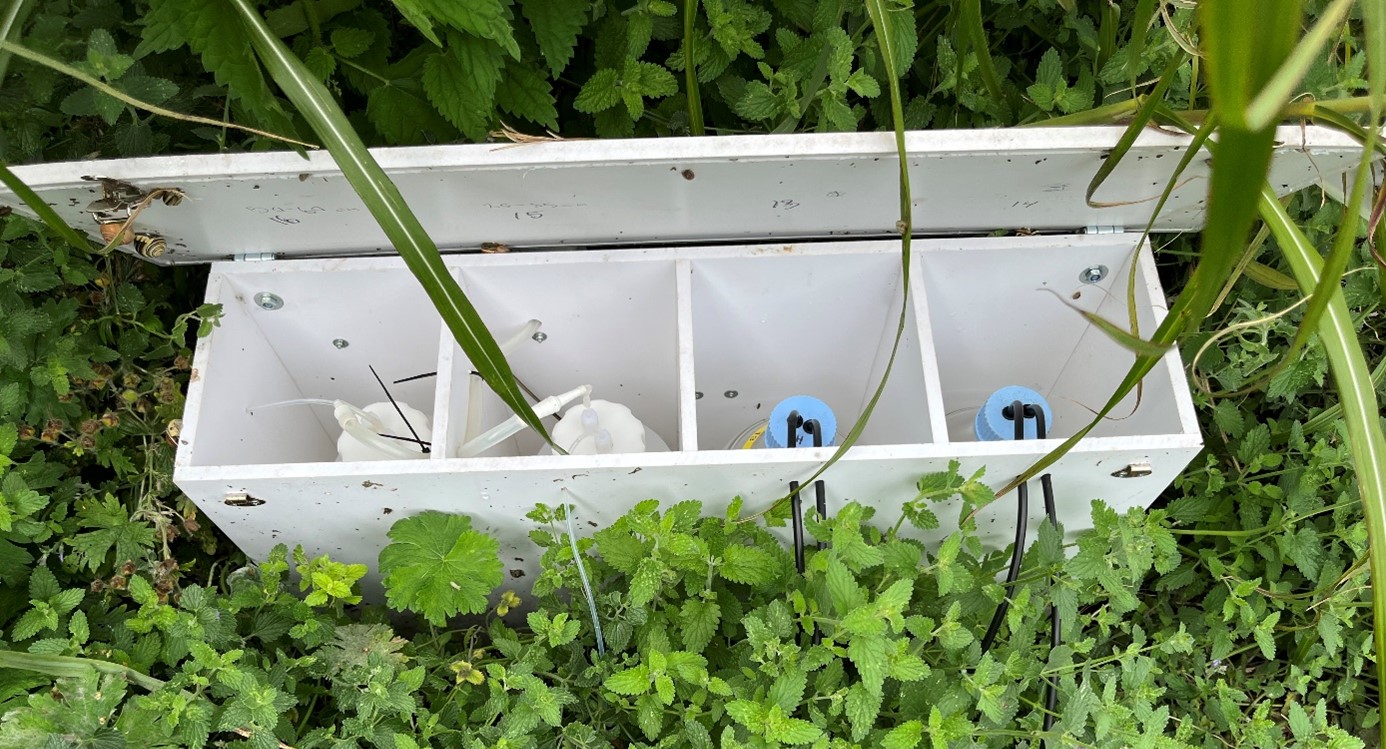The team from Aarhus University, Department of Biology, is responsible for sampling the four test sites located in Aarhus. Due to the stochastic nature of rain events, the sampling is challenging, sometimes unpredictable, and often expensive. To overcome this the AU team has developed an autonomously low-cost rain event based sampling hardware, consisting of a digital rain gauge, a PLC (programmable logic controller, a small computer adopted from the manufacturing industry), a variety of pumps and temporary on site storage box that store the samples until collection, generally done right after the rain event is registered. The entire system is powered by a 12v AGM battery.

Figure 1: Two pumps sampling polluted surface water in a dry pond.
The intensity of the rain event is continuously monitored by the rain gauge. When a threshold is reached, the PLC is activated and triggers a series of sampling pumps with time delays. Two water pumps sample the run offed surface water from the dry pond (Figure 1). The interval between the two samples can be adjusted such that temporal variation in pollutant concentration can be assessed.

Figure 2: Suction cell for soil pore water sampling, Ø22 mm.
For sampling, suction cells were installed at two different depths in the dry pond. The top cell was installed at approximately 25-30 cm below the soil surface while the second one is deeper, 50-55 cm below the soil surface. The suction cells consist of a porous cell, where water can flow through and store in bottles installed at the surface in light proof boxes. The bottles are connected to vacuum pumps by an 1/8” airtight hose. Air in the bottle is primed by the vacuum pump so that the suction cells passively collect a compound sample while the surface water infiltrates. Sampling continues until the vacuum is depleted. High porosity in the soil reduces the longevity of the vacuum in the bottle and suction cell, but to overcome this, air can be evacuated several times by reoccurring automatic activation of the vacuum pump. Finally, the samples are stored in a lightproof box until they are collected for further analysis in the laboratory at Aarhus University (Figure 3).

Figure 3: Temporary on site storage box for surface water samples (right) and pore water samples (left). The vacuum pump is located on the back of the box.
Authors: Emil Jespersen, Aarhus University, emil@bio.au.dk (27/09/2023)